By redistributing and relocating its operational units the Royal Netherlands Army (RNLA) will consists of two rather than three mechanised brigades (Mechbrigs), in addition to the 11 Air Mobile brigade (Air Assault). Although, by adding an extra armoured infantry battalion the combat strength and readiness capability (‘more teeth to tail’) of the two remaining (13 and 43) Mechbrigs out of the original three will even be strengthened. After upgrading its remaining 110 Leopard 2 A5-NL MBT’s to the A6-NL the RNLA is now running a threefold competition to acquire a new family of armoured – tracked and both 4×4 and 8×8 wheeled – combat infantry vehicles.
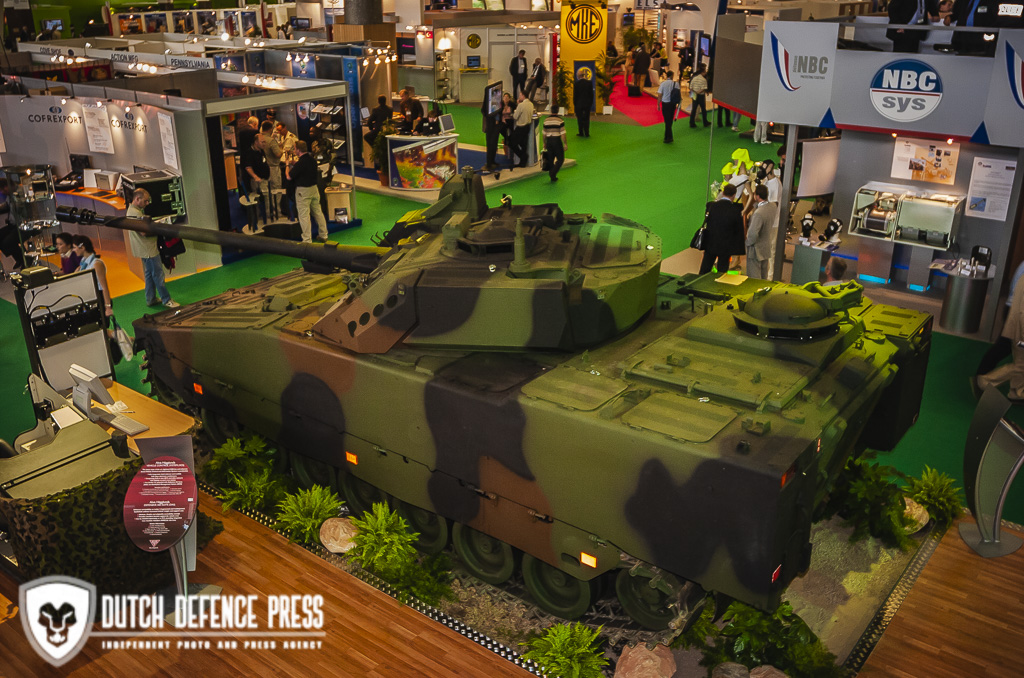
The need for this has been shaped by a multiplicity of military requirements of which the YPR-765 and M-577, though still in service, are no longer capable of meeting. Both vehicles have reached the technological end of the line. One type of vehicle that partially will replace both aging vehicles is the ‘Fennek’ light armoured 4×4 wheeled Reconnaissance and Utility Vehicle (contract worth € 182,1 million). Of this type, 208 vehicles will be introduced in the short term. The second program seeks for a large armoured 8×8 wheeled vehicle, for which a sum of € 841,1 million is set aside. Until recently all eyes were focussed on the world’s probably best-protected armoured personnel carrier the ‘Boxer’ also known as GTK or AMRAV which is at the prototype stage for the RNLA and the German Army. But the decision by the United Kingdom to withdraw from participation in the trilateral project has put a serious question-mark over its future and compels the Netherlands to review its participation. Its now also looking for other of the shelve alternatives such as the Mowag Piranha IV and Patria AMV. A total of 257 vehicles of this type are needed to harden the C2, combat support and combat service support of the RNLA mechanized formations. The third program seeks a new tracked infantry fighting vehicle (IFV). A leading candidate is understood to be the Swedish by Alvis Hägglunds developed Combat Vehicle 90 (CV90). Alternatives competing are the Austrian Spanish co-operative development of the ‘Ulan’, produced by Steyr-Daimler-Puch and the in Germany by PSM (a joint venture of Rheinmetall Landsystems and Krauss-Maffei Wegmann) developed ‘Puma’. It’s expected that the Dutch Ministry of Defence plans to award both contracts – for the large armoured 8×8 wheeled vehicle (worth) and tracked IFV (worth € 895,9 million) – in the fourth quarter of 2004.
The Swiss version of the CV9030 Mk-II was tested by the RNLA during extensive evaluation tests and in-country trials which were conducted in arduous conditions in 2003. Based on the technical performance demonstrated in these demanding trials and on its overall cost-effectiveness against a stringent set of whole life criteria, the RNLA now shows a keen interest in the latest member in the CV90 family, the CV9035 Mk-III, a third-generation IFV which is derived from the CV9030 Mk-II. The CV9035 Mk-III features considerably enhanced firepower, survivability, mobility, ergonomics and electronic system capability over its predecessor and suits the needs of the specifications that the Dutch required. The Mk-III weighs 32 tonnes (gross combat weight) but it has a stretch potential to 35 tonnes. Although the initial drawings of the Mk III was first made during 2001 and has been under development and test since then on, the challenge to meet the demanding operational requirements of the RNLA has speeded it all up very rapidly. The first demonstrator Mk-III ran in 2002 and the first completed prototype in 2003. The vehicle was shown publicly for the first time at Eurosatory 2004.
From the outset the requirements of the RNLA were extremely demanding. These requirements emerged as a result of a threat and capabilities assessment, designed to ensure that the Infantry can overmatch the threat on the future battlefield. The idea behind all this is to provide Dutch infantrymen, when they’re in harm’s way, with an weapon system that insures overmatch by increasing the ability to acquire, identify, and engage, in both day and night operations. Which allows the crew to acquire more targets faster by adding an independent sight for the commander. The improved acquisition system allows the crew to engage targets faster and more accurately by enabling first burst on target, eliminating the need for a sensing round and which above all else provides the crew with a level of protection never before achieved in an IFV.
Improved survivability also has been achieved through the high level of ballistic protection developed for the new armour package of the CV9035 Mk III. Taking into account a broad threat spectrum, it offers a degree of crew protection unequalled by any other modern IFV in the world in its weight class can offer today. The armour protection is to be effective against antitank mines (blast mines) and projectile forming mines and should be able to withstand antitank mines containing up to 8 kg of explosives. The frontal arc armour is designed to protect the vehicle and crew against 30 mm armour-piercing ammunition. But also rocket-propelled grenade (RPG-7) attacks doesn’t get through. These ubiquitous, shoulder-fired anti-armour devices has been around for decades and still continues to take its toll in Iraq and Afghanistan. The top-side armour provides a high level of protection against top-attack weapons such as bomblets. Furthermore, the vehicle will feature all-round protection against 14.5mm armour-piercing rounds and against the effects of artillery fragments. Moreover, in order to respond appropriately to various threat factors it can be very quickly fitted with optional additional armour add-ons to the basic armour of the vehicle under field conditions. By upgrading to the additional ballistic protection level the vehicle will meet the stringent armour criteria as the best form of crew protection. These add-on modules should provide an additional all-round effective protection against 30 mm armour-piercing ammunition. Keeping its forward-looking design in mind, it will be possible to retrofit the CV9035 with future alternative armour technologies, ensuring that this weapons system remains on the cutting edge of technology for years to come.
The stealthy turret design gives the complete vehicle system excellent detection avoidance. The basic turret is electrically operated. Equipped with the ability to pivot to infinity, the turret of the CV9035 has a 360°, continuous traverse ability. It features automatic dual target tracking, automatic gun target adjustment, automatic sighting and a 360° rotating commander’s cupola with independent viewer that speeds targeting for the commander and gunner, enabling the CV9035 with so called hunter/killer capabilities. In this the target is detected and tracked by the commander and then handed over to the gunner, who carries out the engagement. The CV9035 will be equipped with an advanced array of optic and optronic observation and target sensors. Both commander and gunner occupy decoupled redundant positions in the turret and have fully stabilised day/night sights and third generation thermal imaging device as well as the help of built-in, high-resolution CCD daylight cameras. The ???? company ????? signs for the concept of integration of these sights within the advanced digitised fire-control system of the CV9035. (Who and what type of sights and target sensors and the specifications of them?) The design of the turret control panel represents a major departure. The vehicles communications suite enable digital information displays for the commander, gunner, driver and squad leader. The extensive use of state-of-the-art electronics and the digitalisation of the sight systems enables utilisation of relatively large, high-resolution monitors which have nothing in common with conventional oculars. Moreover, the vehicle is also equipped with a complete gun stabilisation system, an eye-safe laser range finder and numerous other devices such as Alvis Hägglunds’ third generation vehicle control and information system. This software is prepared for the integration of command, control, communications, computers and intelligence system, combat identification and other third party software. It is based on fully integrated, scalable and open electronic architecture and a video network with displays at each crew station. The extensive BITE (Build-In Test Equipment) system with interactive technical manuals improves the CV9035 sustainability and availability thus reducing the logistic support cost. Further the BITE system gives the possibility to reduce the training cost as it works as a built in Computer Based Trainer.
The CV9035 carries a crew of eleven: the driver, the gunner and the commander as well as a eight-man Infantry-section in the rear fighting compartment. A modified chassis hull provides optimised ergonomics in combination with a high protection level. (what is exactly modified?) The side-wall suspended seats and interior features of the vehicle are designed to protect the crew in case of brutal vertical acceleration due to the effects of landmine detonations. More than ever now, mine protection is also part of the mobility concept. It ensures that none of the occupants get seriously injured as otherwise the medical services with ambulances and even medevac helicopters would have to be called in with all the resultant delays. The Infantry-section will be able to carry different loads of equipment and extra weapons depending on task. Camera-supported situation imagery make the tasks of the riflemen on board far easier. The men in the rear fighting compartment will have access to the same information as the commander and gun layer. This means that the infantry section will be much better able to observe the battlefield and engage close-in targets – well-protected and from the relative comfort of their seats. They will be able to dismount and execute their mission with a clear picture of what’s going on outside – whether it’s a fire fight or riot control or the distribution of humanitarian aid.
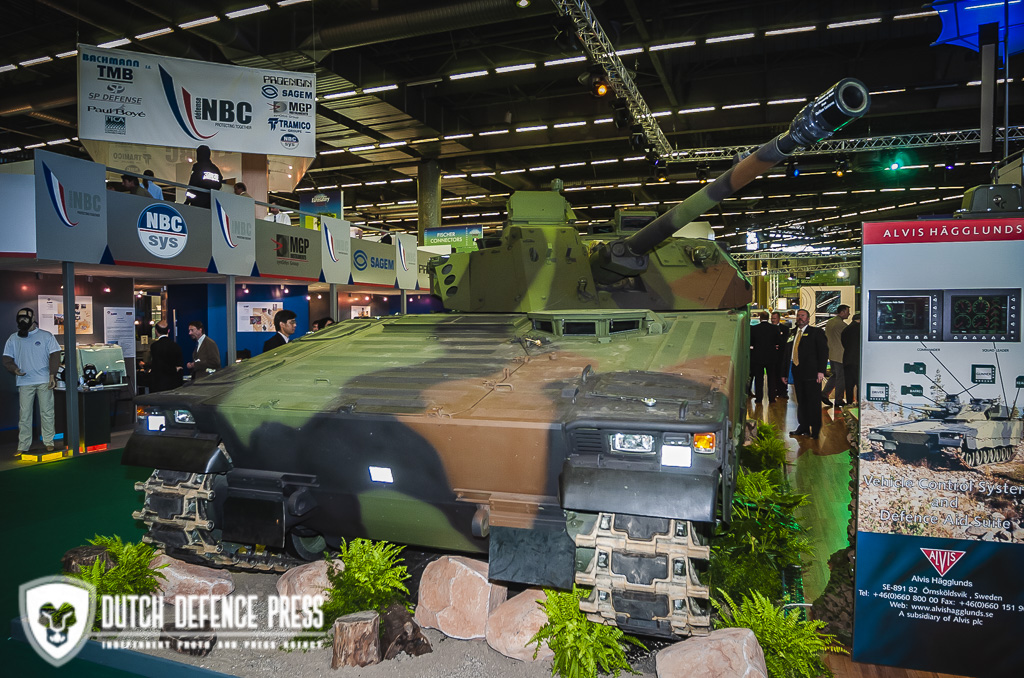
The main armament is the advanced 35/50mm Bushmaster III automatic cannon, with Chain Gun® technology, with a computerised fire control system incorporating an ammunition programmer, manufactured by ATK Alliant Techsystems. Until so far the Dutch are the only one who made the 35/50mm gun an primary requirement. This gun normally fires 35mm ammunition but can be upgraded to 50mm. Development of the 50mm version, and its associated suite of ammunition such as the 50mm Supershot, is not complete yet and would have to be funded. The Bushmaster III has a single barrel featuring a very high rate of fire, is long-lived and meets the very highest ballistic requirements. It has an dual feed mechanism (75 rounds at the weapon, distributed ?/? and 133 stowed is this correct?) and remote ammunition selection. Either 35mm Armour Piercing Fin Stabilised Discarding Sabot with Tracer (APFSDS-T) or Air Brust Munition/Kinetic Energy Time Fuze (ABM/KETF) ammunition may be selected with the flick of a switch. Both ammunition types are developed and produced by the German-Swiss company Oerlikon Contraves Pyrotec (a subsidiary of Rheinmetall DeTec). The ABM/KETF round contains a programmable time-delay fuse. The ABM round is basically a reinvention of Shrapnel, brought up to date. The shells contain a cluster of tungsten-alloy pellets ahead of a burster charge. After the velocity of the projectile in the barrel is measured, the delay setting is calculated and each round inductively programmed at the muzzle of the barrel with data from the fire control computer. It then sets a time fuze on the shell by electronic impulse as it leaves the muzzle. The shell is timed to explode just before it reaches the target, sending a cone-shaped spray of pellets towards the target, like a huge shotgun blast. The ABM is capable of effectively addressing a wide spectrum of modern battlefield threats, including armoured vehicles, field fortifications containing antitank guided missile systems, troops occupying uncovered fighting positions and (attack) helicopters. The ability to fire ABM ammunition was demonstrated during recent trials. The Gunner may select from single or multiple shot modes. It also has an anti aircraft mode, using the laser range finder at “pulse fire” mode. The standard rate of fire of the gun is 200 rounds per minute, and has a range of close to 3000 metres (depending on the ammunition used). These ammunition types, making it capable of defeating the majority of armoured vehicles it is likely to encounter on tomorrows battlefield, up to and including some main battle tanks. Furthermore, apart from the automatic cannon, a 7.62mm machine gun is mounted coaxially with the main armament for engaging light targets and providing close quarters defence and this has increased elevation up to ??? degrees for urban warfare situations.
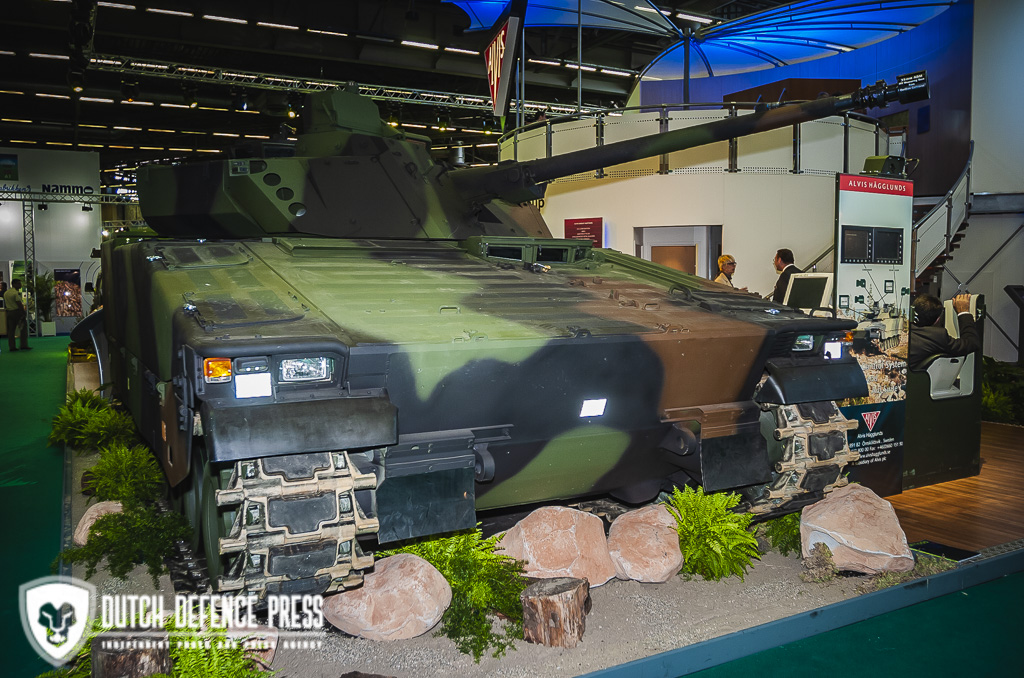
The Mk-III is designed for maximum performance in the most difficult terrain and hostile combat environments. It’s an extremely agile vehicle that has the speed and performance to keep up with Leopard 2 A6 Main Battle Tanks during fast-moving combat operations through marshes, snow and over the most inhospitable terrain. As a result, the speed factor gains new significance as an aspect of battlefield protection. The diesel engine, designed for a maximum output of over ??? kW/??? hp is developed by Scania. (what type of engine and specifications?) This engine assures the outstanding tactical mobility of the vehicle. The vehicle has a low, compact profile, low infrared signature, low radar signature and low engine noise from the powerful Scania engine. This make the vehicle a perfect “sneaker”. An improved integrated suspension unit offering high performance hydraulic damping and proven reliability and assures considerably smoother drive characteristics. The engine is equipped with an automatic fire extinguisher system, while the fighting compartment is fitted with a fire and explosion suppression system and full nuclear, chemical and biological protection is provided. It also has an increased environmental capability with up-graded A/C and heater systems. Caterpillar’s UK-based subsidiary Perkins will supply the X300 fully electronic controlled automatic transmission. The vehicle is easy to maintain, and it’s constructed with field maintenance in mind. The driver has 158 degree of vision with overlapping periscopes. He also has night capacity with a night periscope.
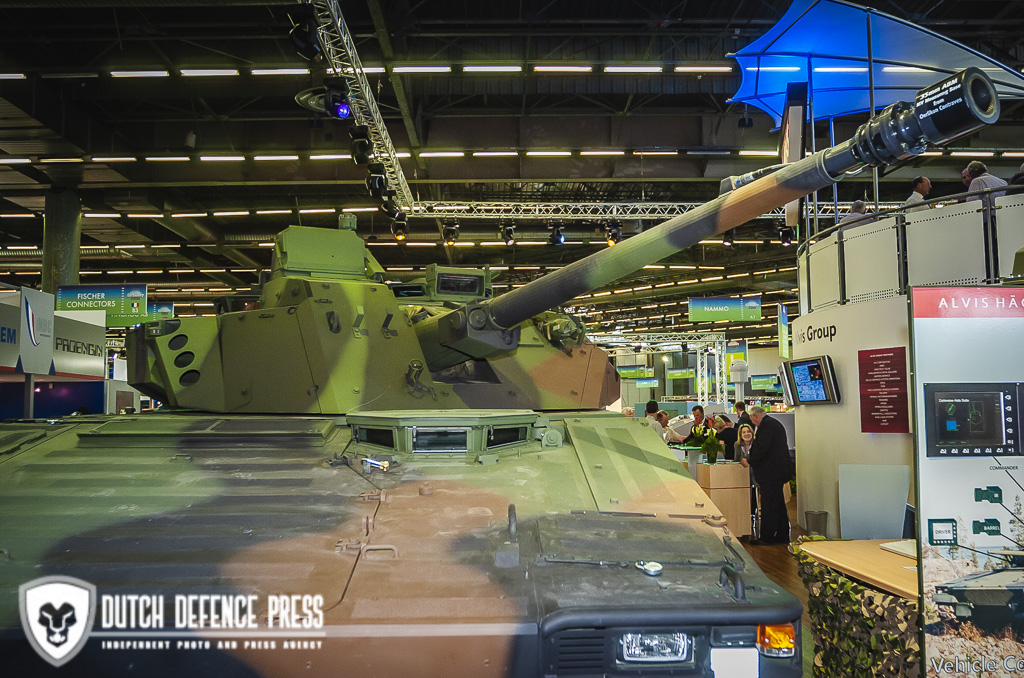
To protect the Mk-III from possible attacks from handheld antitank weapons like the RPG-7, RPG-9 and RPG-18, it is equipped with Alvis Hägglunds defensive aids suite (DAS) which contains laser warning receivers integrated with smoke grenade launchers. The main armament is linked to the DAS software. Thanks to its sensor systems, it can detect incoming antitank guided missiles and light antitank projectiles. With the help of Softkill infrared decoys, the system is capable of successfully blinding infrared sensor head-guided weapons, deflecting them from the target, i.e. the CV9035. The self-protection system consists of a missile warning system, a laser warning system, a central computer, pyrotechnical dispensers (e.g. smokegrenades) and systems for active optronic and electronic countermeasures (e.g. IR jammer). After a warning has been received, the central computer automatically performs timely selection of the most effective self-protection countermeasure.
Alvis Hägglunds will be actively beating the drum for the Mk-III in the international marketplace. Currently its fighting on two new fronts: Netherlands, where there is a requirement for about 200 and Greece where a contract for 150 vehicles is to be won. At Alvis Hägglunds they’re confident that they will find customers abroad who’ll want the CV9035. The way they see it, though, the Mk-III is a technologically advanced, highly mobile, digital fighting system that significantly will increases the mechanized infantry’s lethality and survivability in battle. One that can be adapted to perform any conceivable mission in the spectrum. When it comes to firepower, mobility, protection and command technology, the CV9035 Mk-III is believed to be superior to all IFVs currently in service.
The Dutch programme can be seen from the outset as a pacesetter for a third generation of IFVs armed with a 35/50mm armament capable of serving well into the 21st century. The contract, which is subject to customary government and parliamentary approval, comprises an order for 200 vehicles together with associated logistic support. The need is for 151 vehicles in the IFV version; 29 in the CV90 Forward Command Vehicle version, which is a mobile combat C3 (command, control and communications) vehicle equipped with advanced communication and command equipment. The turret is fitted with a 7.62mm general purpose machine gun. The command vehicle provides accommodation for a crew of three, and additional workstations for mission crew; and 20 in the CV90 Armoured Recovery Vehicle, which is operated by a crew of four and is capable of applying a 72t line-pull in any direction. The cupola is armed with a 7.62 machine gun. Recovery operations are carried out using two Rotzler hydraulic winches and a hydraulically operated crane. A dozer blade is fitted on the front of the vehicle. While the development of the Mk-III is complete, production can begin immediately once the order is placed. The individual improvements featured in the CV9035 Mk-III may also be integrated into previous generations of the CV90 family of vehicles.



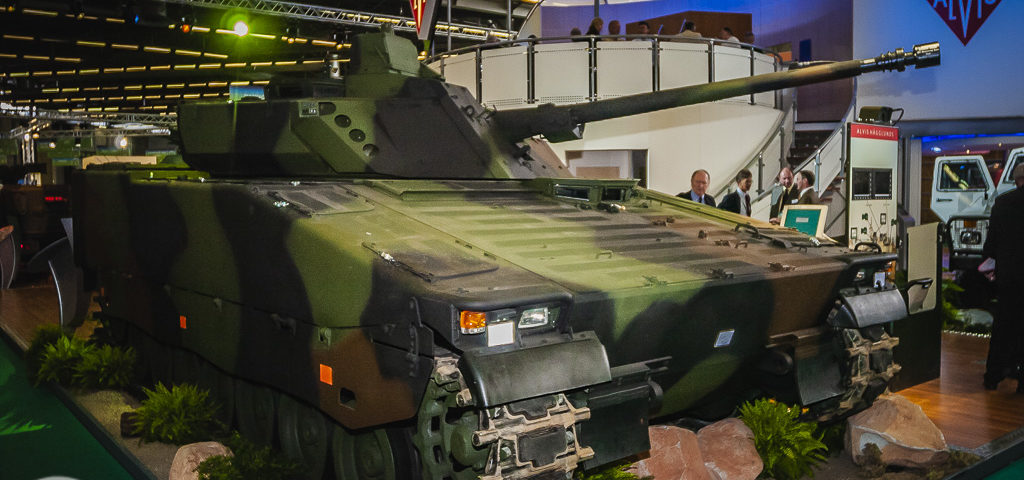
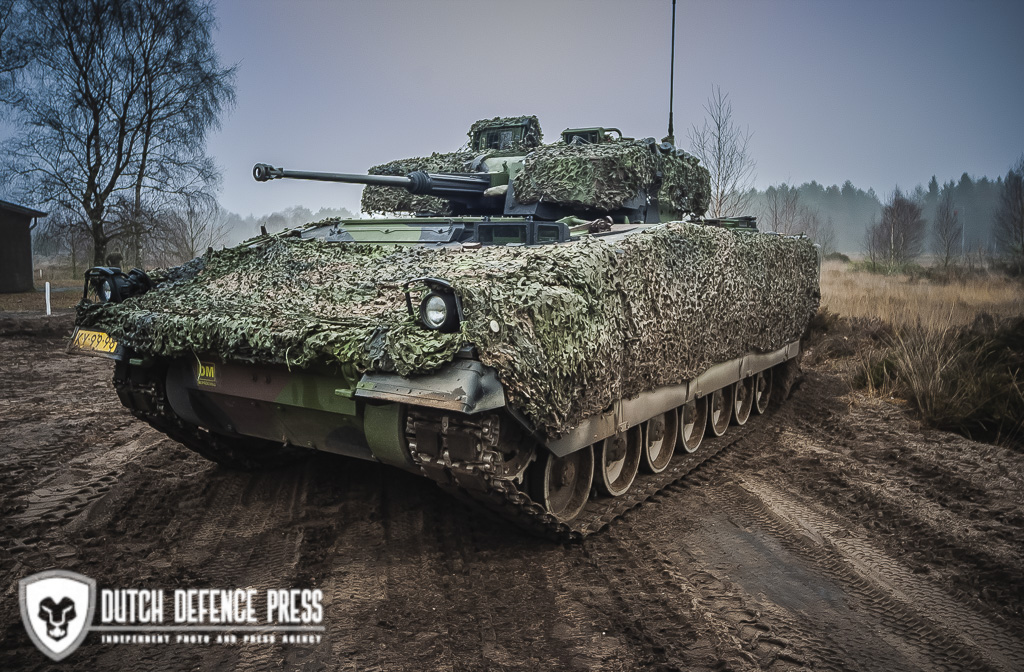
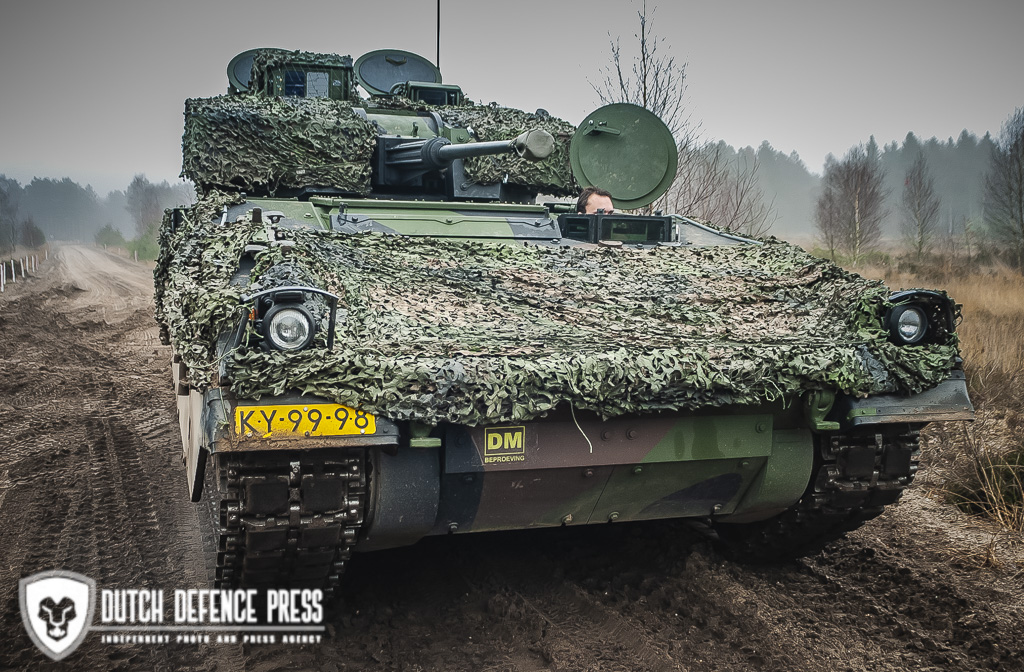
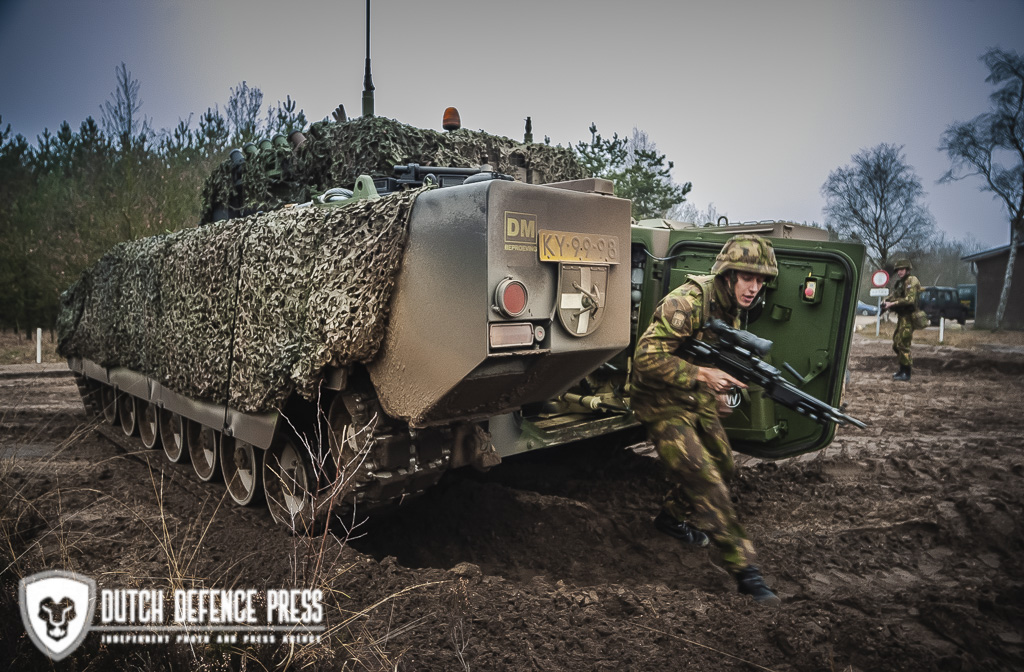
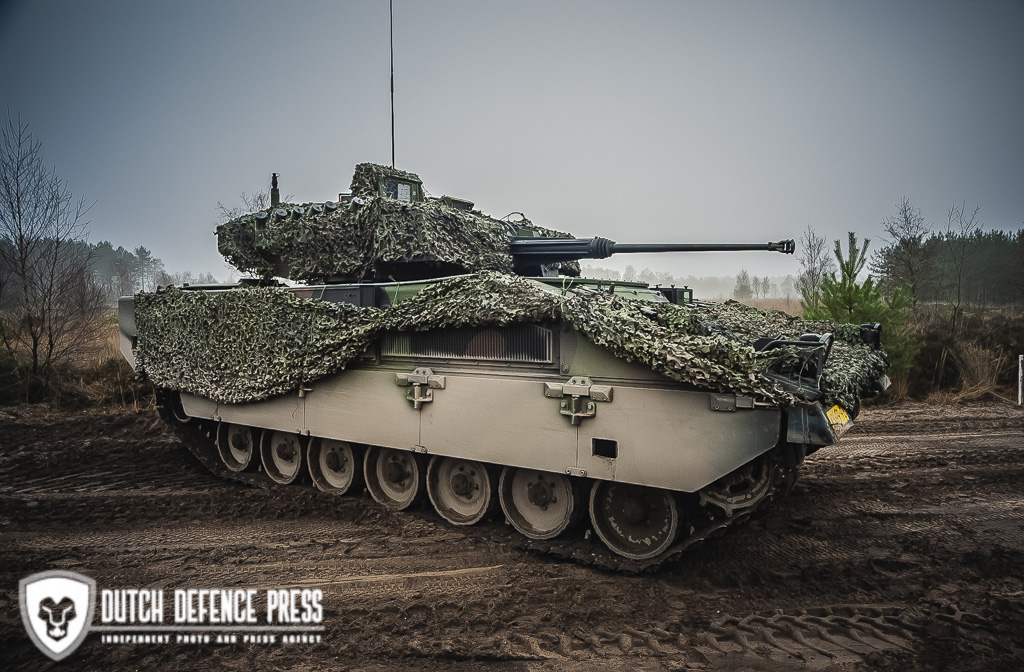
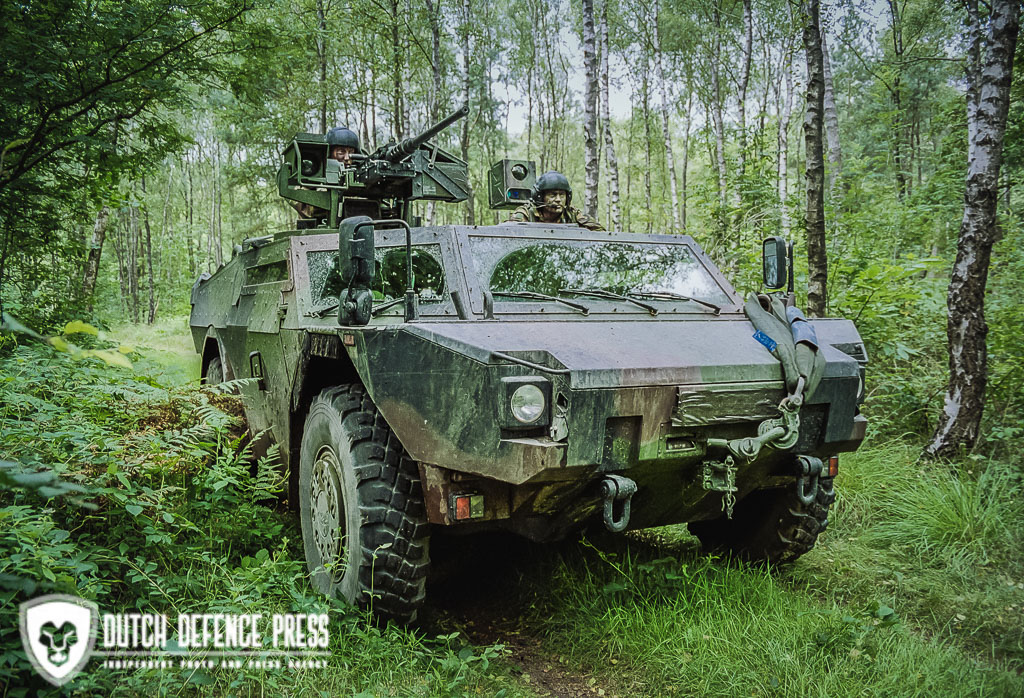
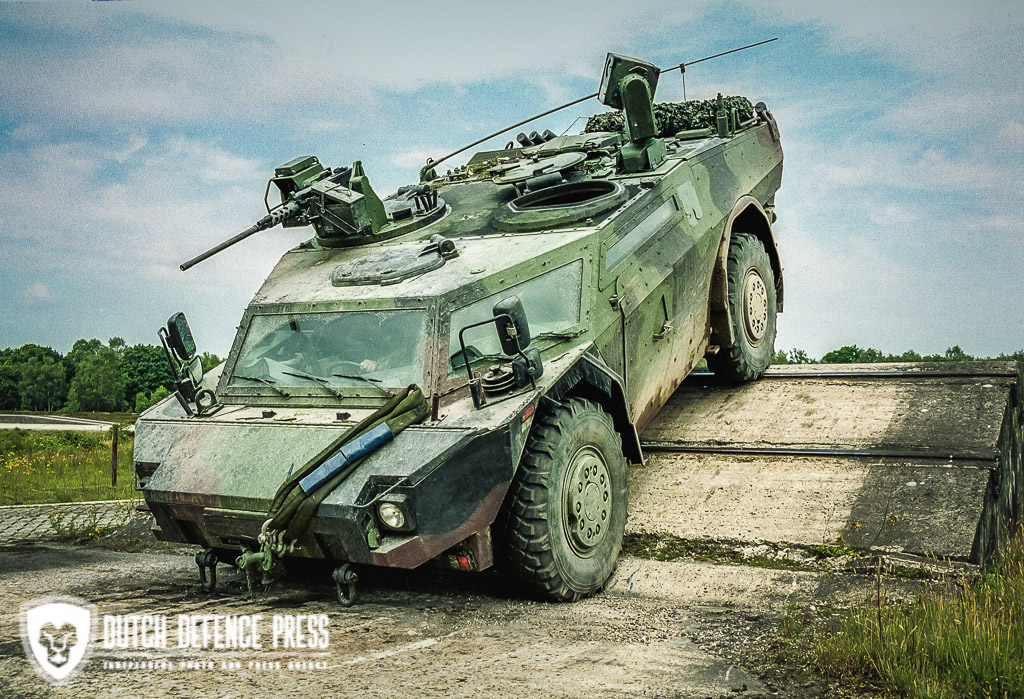
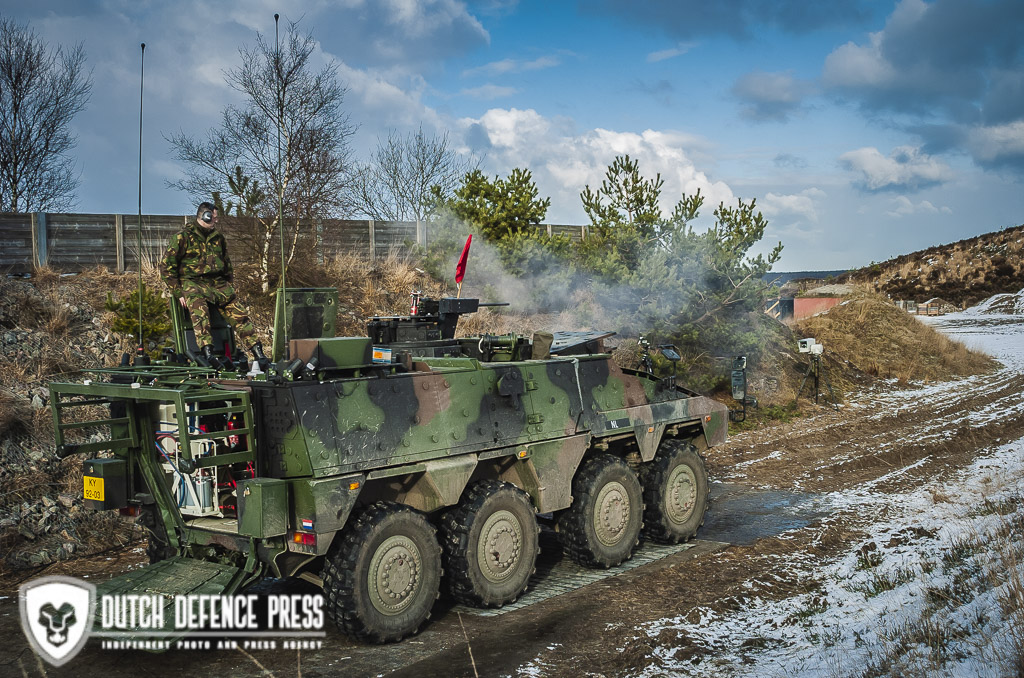
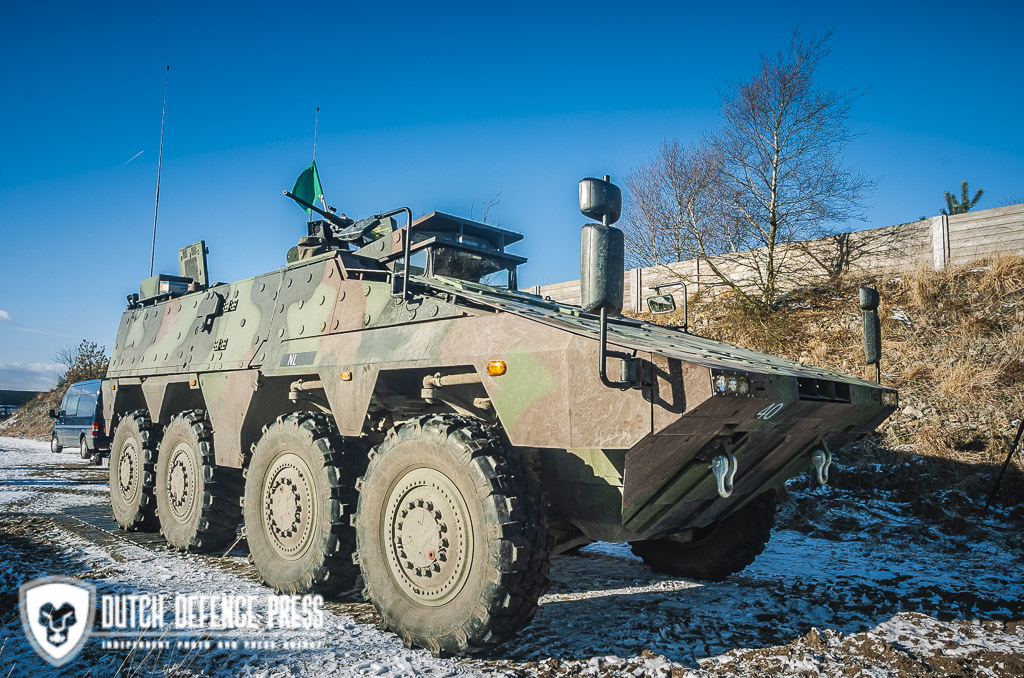
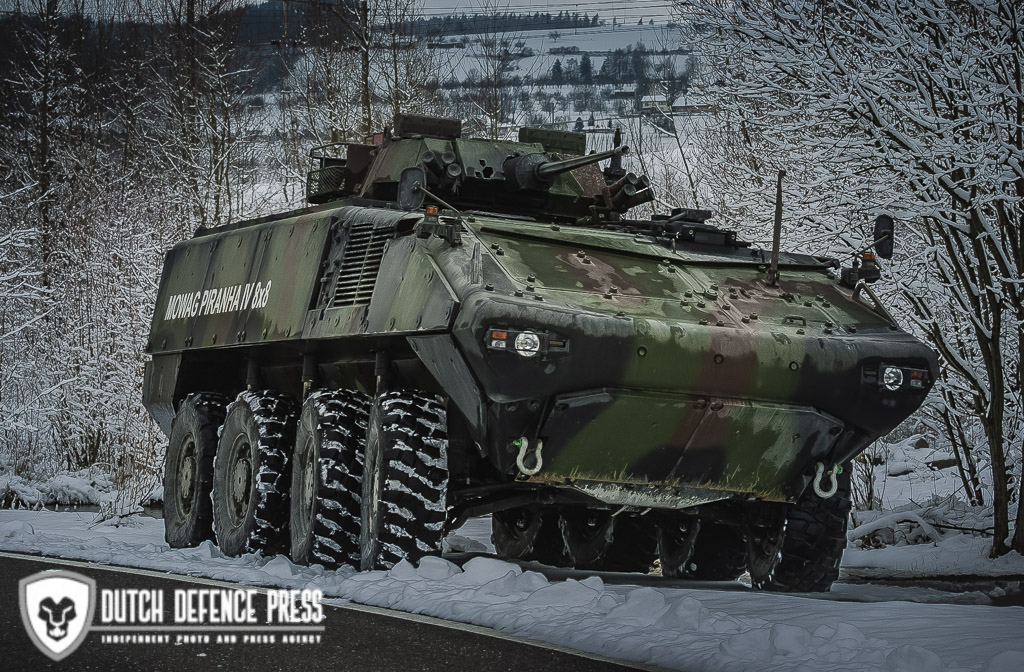
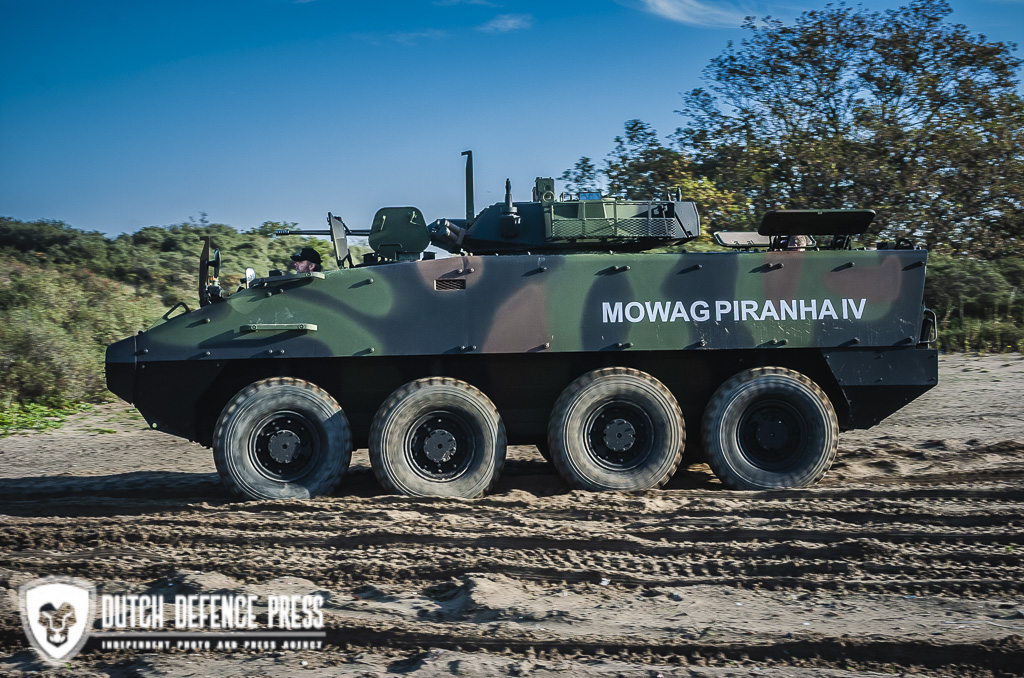
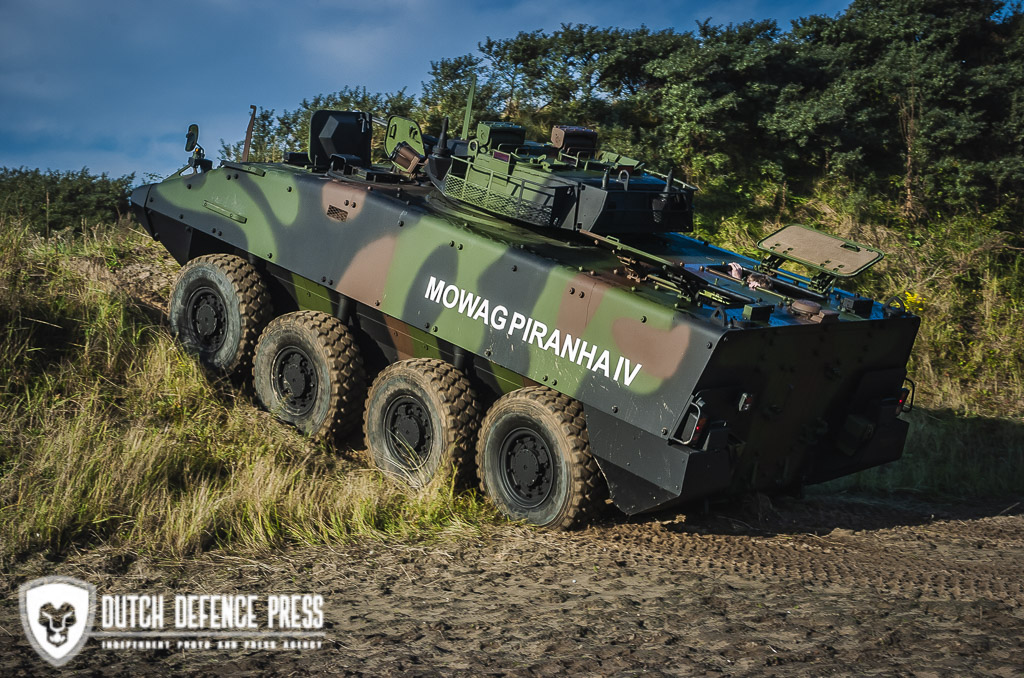
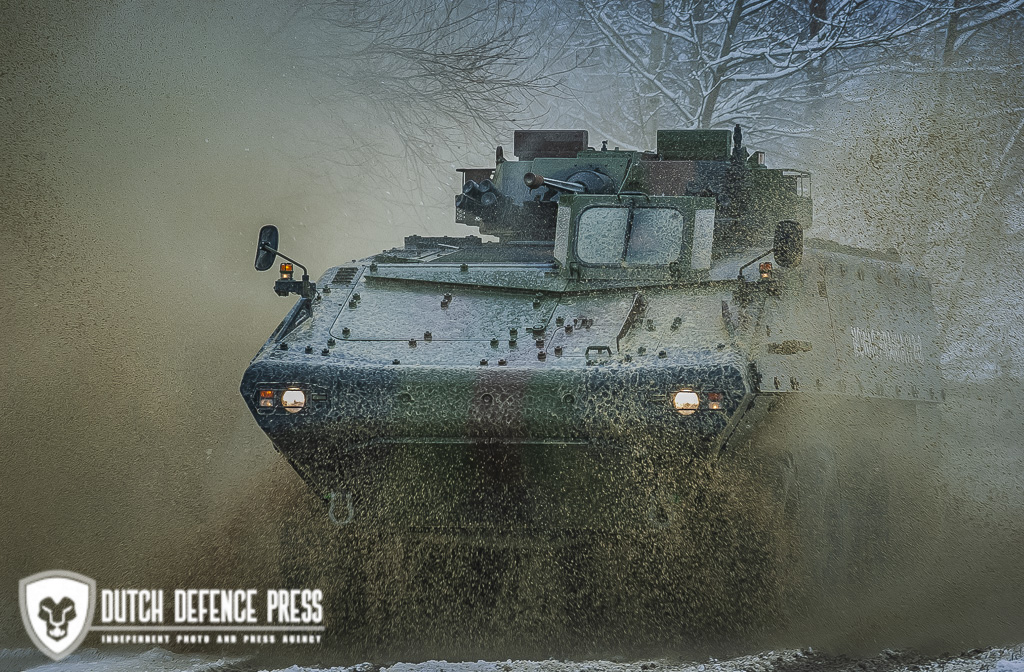
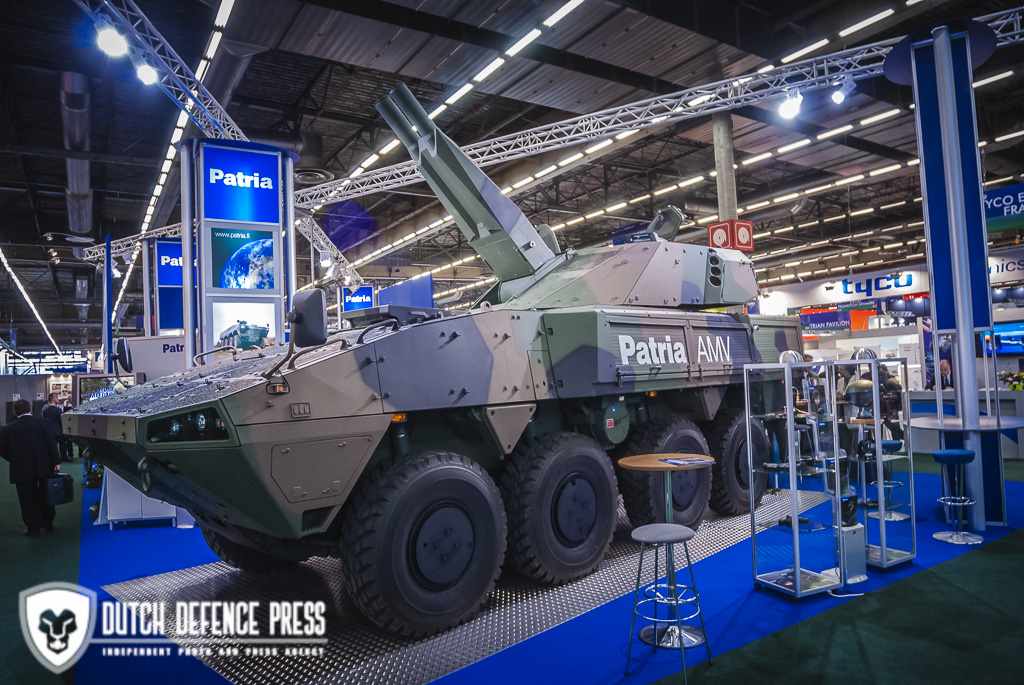
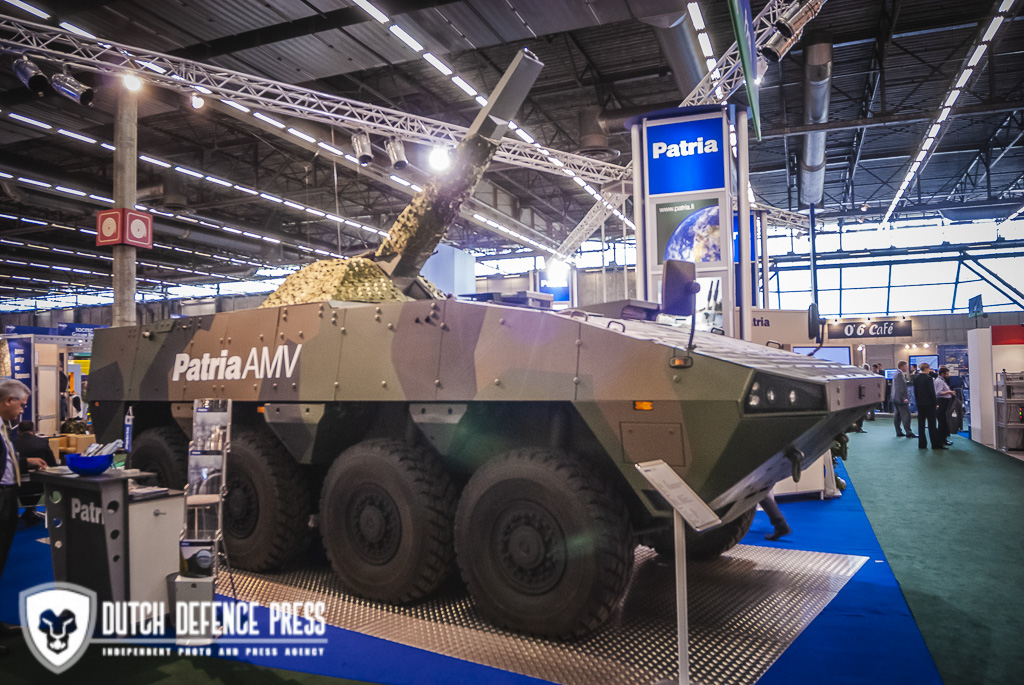

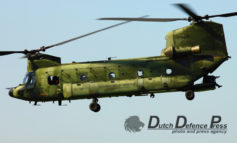
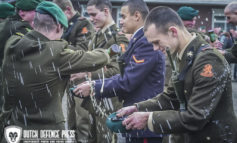
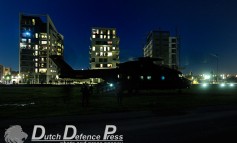
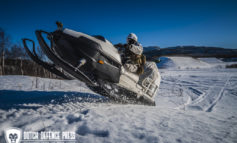
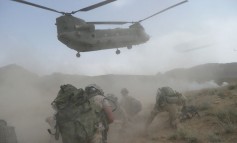
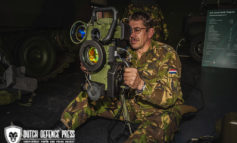



Leave a Reply